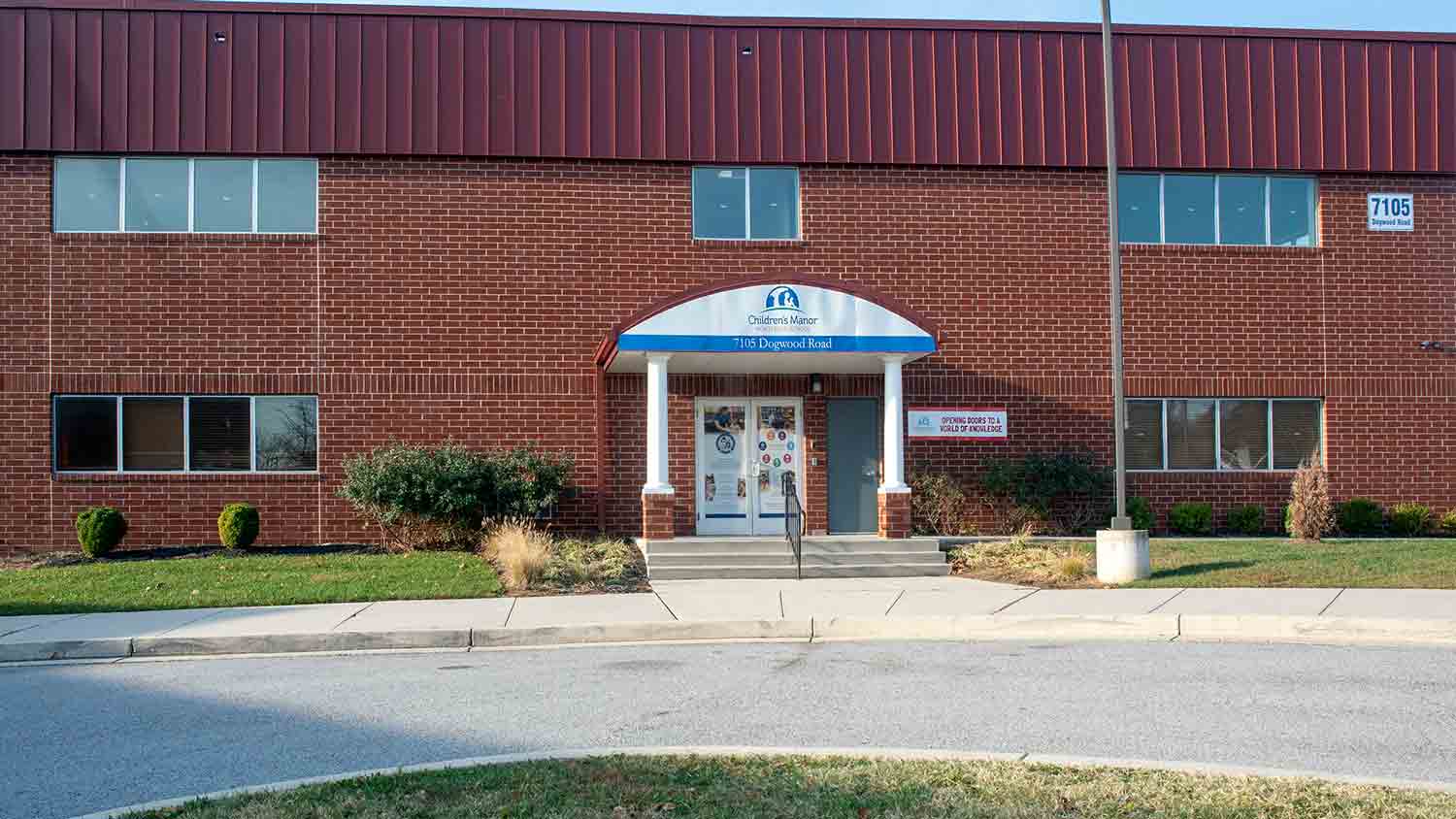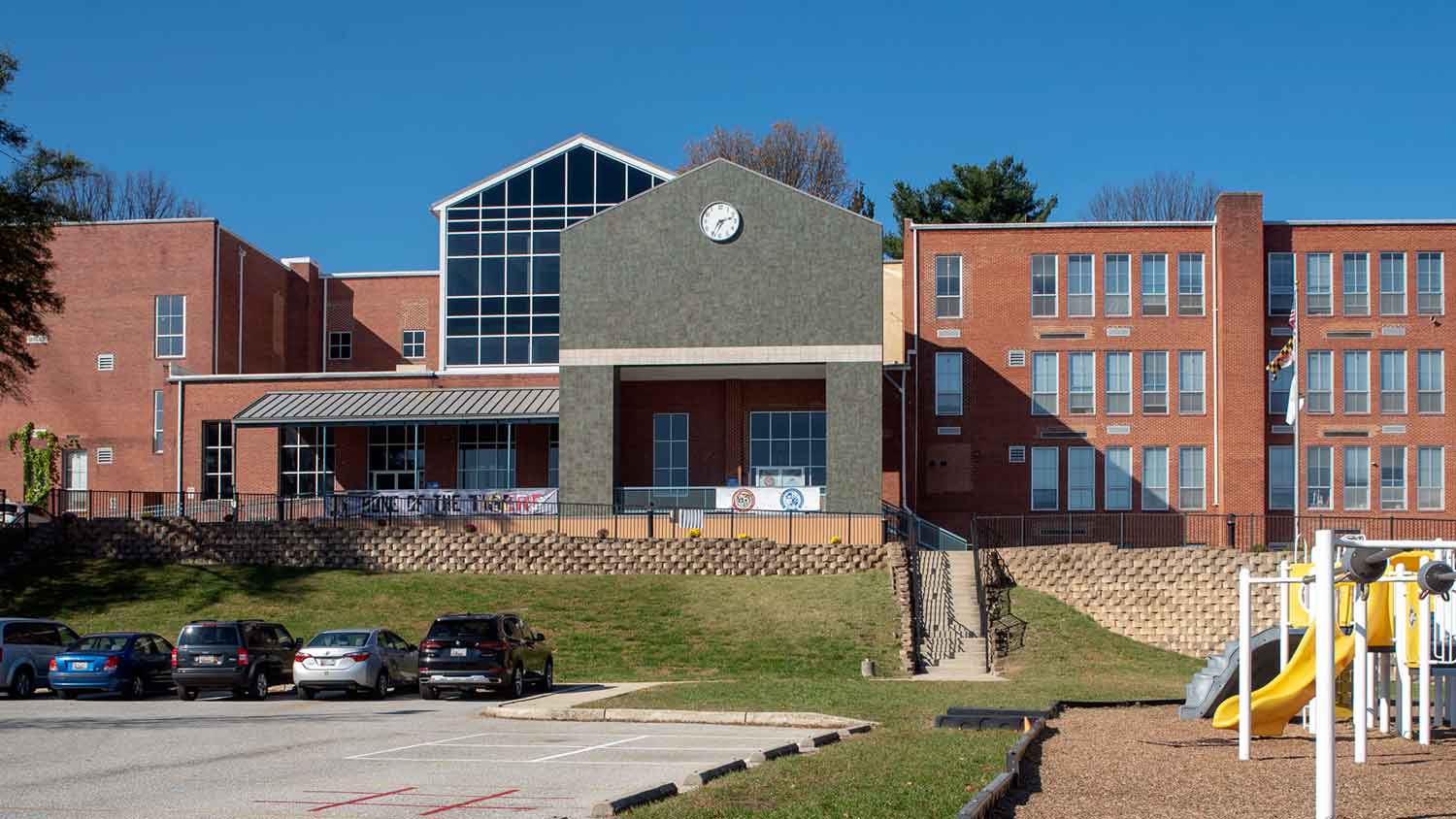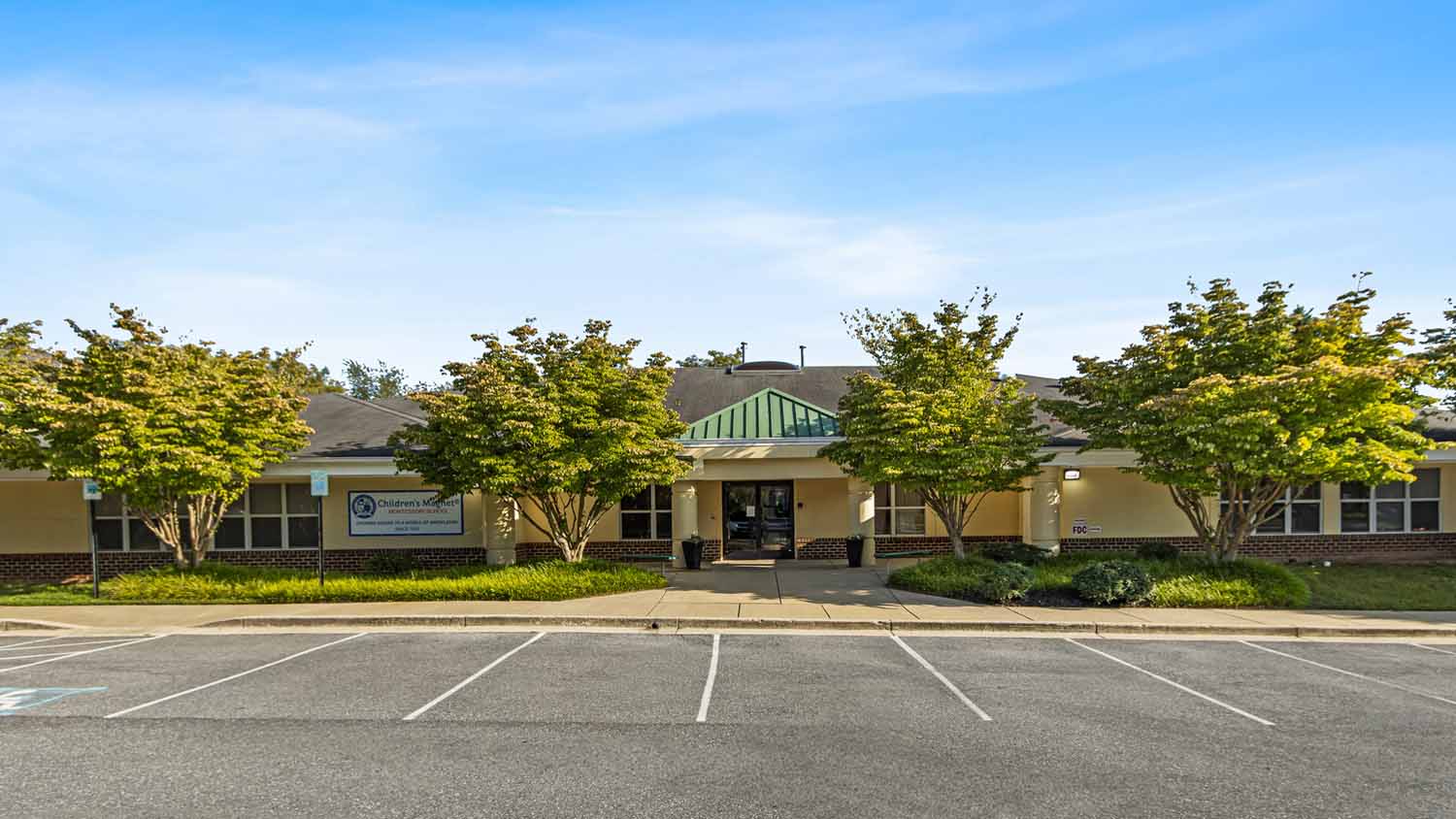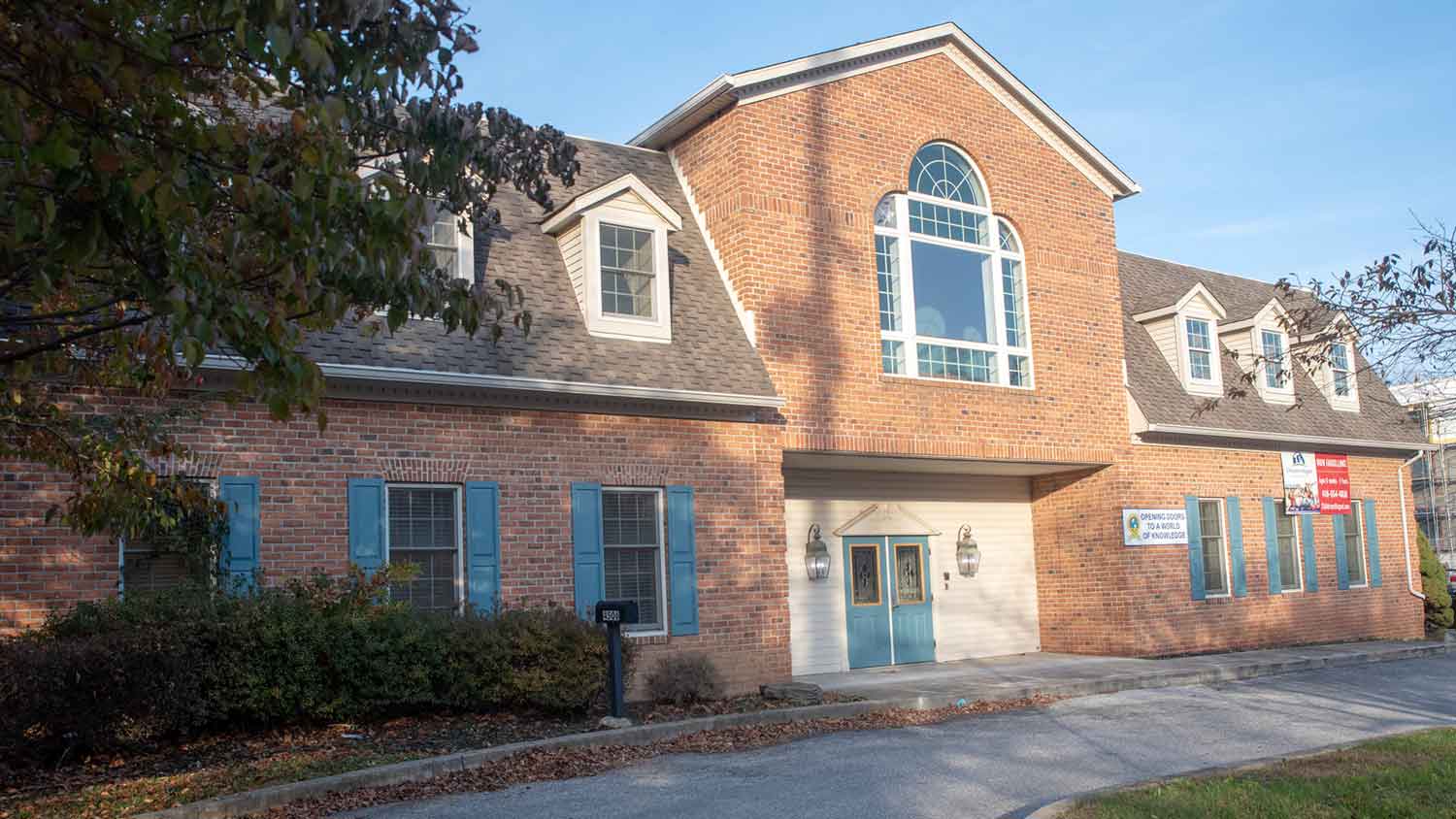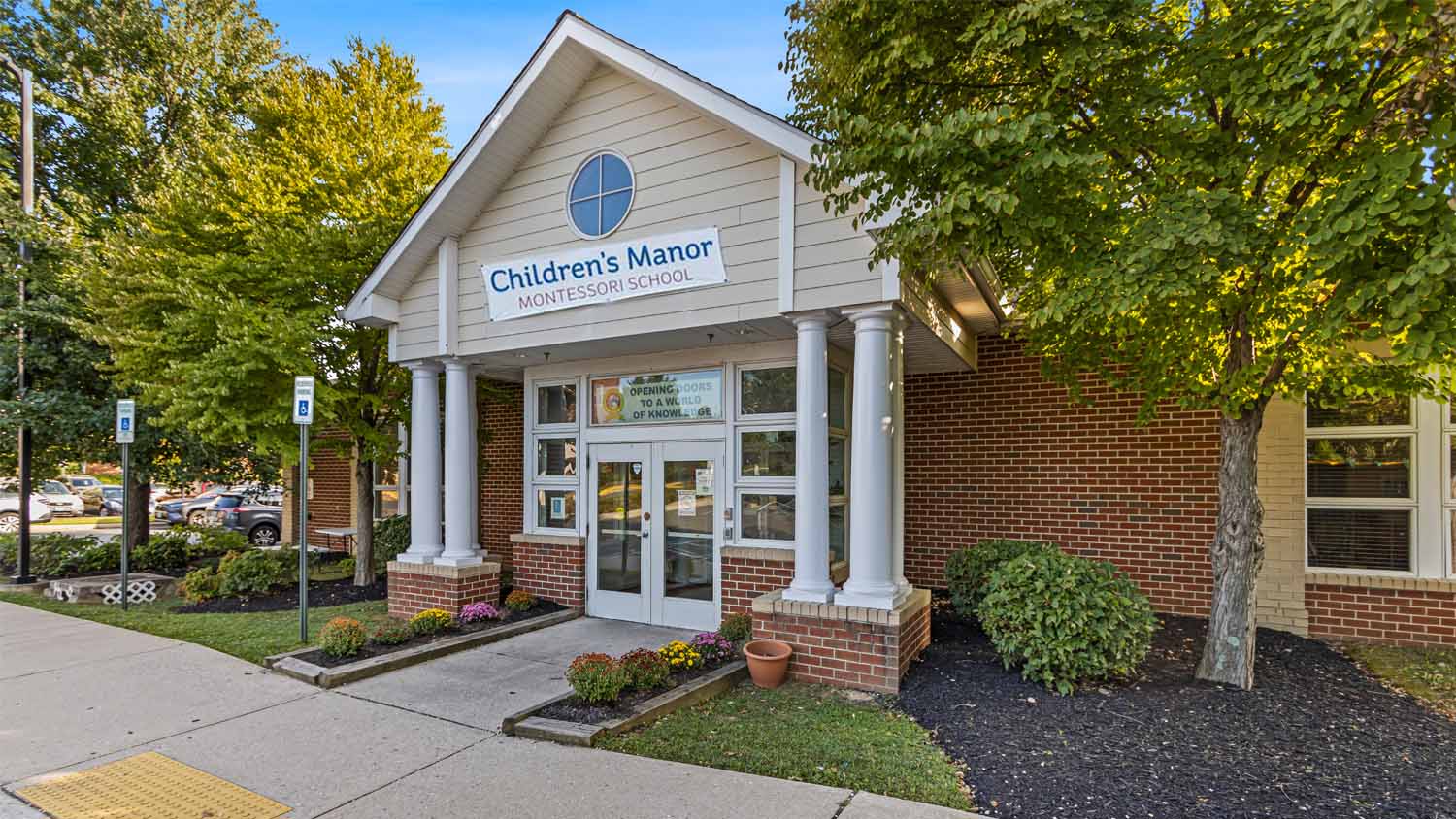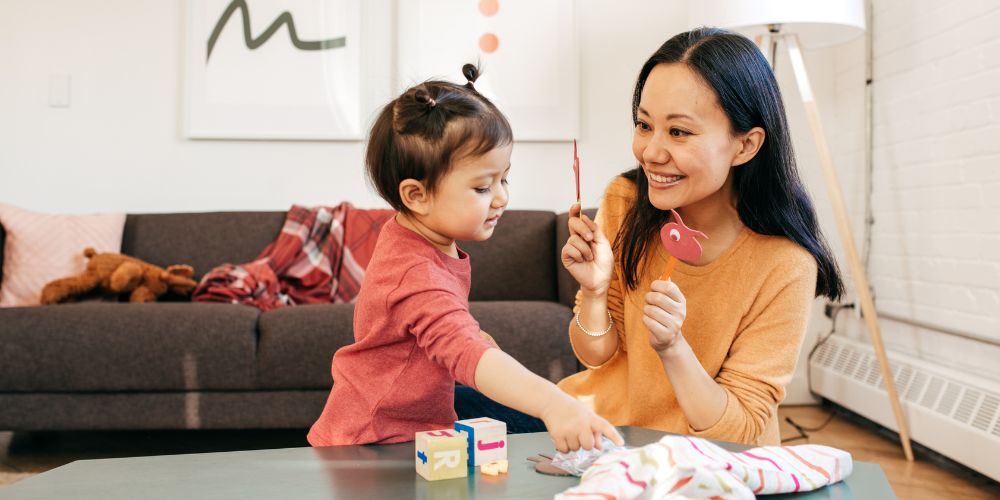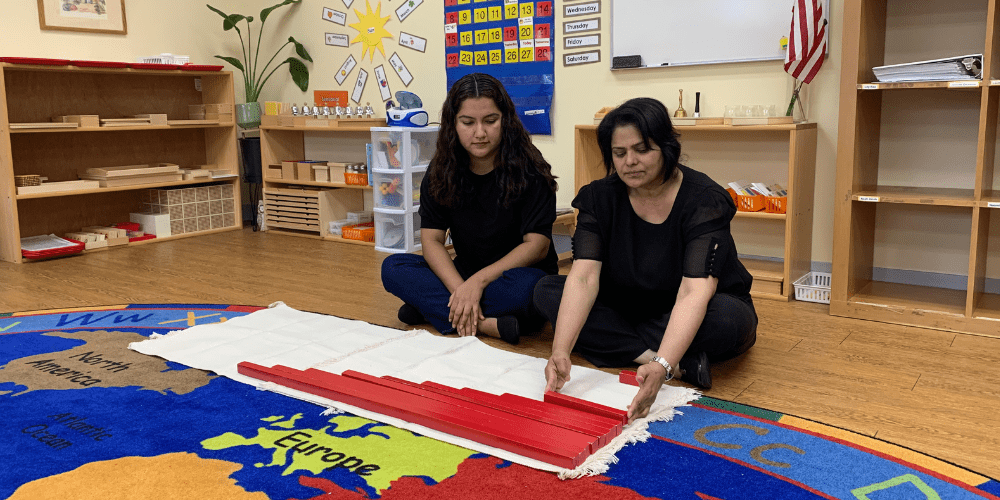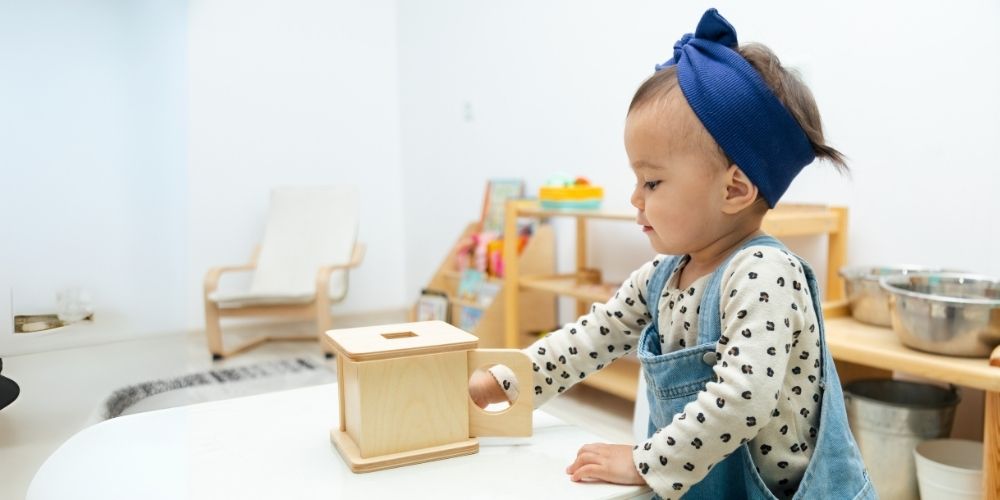About
Primary Preschool Program
Our Primary preschool program for children ages 3.5 – 5 years is designed to meet the physical, cognitive and social needs intrinsic to children at this age and prepare them for Kindergarten and Elementary success. In Montessori prepared classrooms, our primary preschool for 3 year olds to 5 year old children are introduced to the five Montessori learning areas with hands-on, tactile learning experiences while ensuring development of higher order thinking, independence and responsibility. While we take a personalized approach so that each student advances at their own pace, some baseline learning activities children in our Primary program engage in by Montessori learning areas include:
Practical Life
Sensorial
Geography/Culture
Mathematics
Language
Preschool Schedule
Enrichment
Preschool Schedule
9:00 – 9:30 am – Circle Time
- Opening greeting and songs
- Calendar, weather, and/or current events discussion
- Circle time activities involve group/individual participation, teacher demonstration/presentation of Montessori learning activities that the student may later choose during individual work time
- Various activities requiring child/group participation, reinforce/review
- Phonetic sounds and math concepts
- Stories, songs, poems, creative movement, finger plays, and group games
9:30 am – 12:00 pm – Individual Work
- Floor work choices involve the use of a mat to define the student’s work area
- There are “hands on” manipulation of the Montessori learning equipment and other supplemental activities, of which, most are self-correcting by design
- Table work choices involve the use of trays to define the student’s work areas and work focuses on practicing small muscle skills by cutting, pasting, sorting, pouring, punching outlines, grating and water activities
- Both floor work and table work activities encompass the five basic areas of learning:
Practical Life
Sensorial
Language
Mathematics
Cultural Studies
- Integrated half-hour of recess
12:00 – 1:00 pm – Lunch
1:00 – 2:45 pm – Quiet Time/Individual Work/Silent Reading
*Integrated half-hour of recess
2:45 – 5:45 pm – Enrichment in half-hour blocks
- Music & Movement
- Recess
- Gross Motor Games
- Makerspace
- Arts & Crafts
5:45 – 6:00 pm – Group Story
Enrichment
Enrichment Programs
Spanish/Chinese
Music
Enrichment Activities
The Primary Program participates in 2-3 fields trips and 3-5 outreach programs each year.
The purpose of these programs are to enrich and teach our students about culture, hygiene, science, our physical environment, etc.
Outreach programs that we have welcomed in the past include The Maryland Zoo, Maryland Science Center, Young Audiences, Howard County Recycling, Pickering Creek Wildlife Reserve, various dental offices, and Mr. Science.
Past trips have included Pump It Up, Toby’s Dinner Theatre, Baltimore Symphony Orchestra, Clarks Farm, The Maryland Zoo, and Port Discovery in Baltimore.
Preschool Schedule
9:00 – 9:30 am – Circle Time
- Opening greeting and songs
- Calendar, weather, and/or current events discussion
- Circle time activities involve group/individual participation, teacher demonstration/presentation of Montessori learning activities that the student may later choose during individual work time
- Various activities requiring child/group participation, reinforce/review
- Phonetic sounds and math concepts
- Stories, songs, poems, creative movement, finger plays, and group games
9:30 am – 12:00 pm – Individual Work
- Floor work choices involve the use of a mat to define the student’s work area
- There are “hands on” manipulation of the Montessori learning equipment and other supplemental activities, of which, most are self-correcting by design
- Table work choices involve the use of trays to define the student’s work areas and work focuses on practicing small muscle skills by cutting, pasting, sorting, pouring, punching outlines, grating and water activities
- Both floor work and table work activities encompass the five basic areas of learning:
Practical Life
Sensorial
Language
Mathematics
Cultural Studies
- Integrated half-hour of recess
12:00 – 1:00 pm – Lunch
1:00 – 2:45 pm – Quiet Time/Individual Work/Silent Reading
*Integrated half-hour of recess
2:45 – 5:45 pm – Enrichment in half-hour blocks
- Music & Movement
- Recess
- Gross Motor Games
- Makerspace
- Arts & Crafts
5:45 – 6:00 pm – Group Story
Enrichment
Enrichment Programs
Spanish/Chinese
Music
Enrichment Activities
The Primary Program participates in 2-3 fields trips and 3-5 outreach programs each year.
The purpose of these programs are to enrich and teach our students about culture, hygiene, science, our physical environment, etc.
Outreach programs that we have welcomed in the past include The Maryland Zoo, Maryland Science Center, Young Audiences, Howard County Recycling, Pickering Creek Wildlife Reserve, various dental offices, and Mr. Science.
Past trips have included Pump It Up, Toby’s Dinner Theatre, Baltimore Symphony Orchestra, Clarks Farm, The Maryland Zoo, and Port Discovery in Baltimore.
Program Locations
Request Information
Primary Preschool Program (3.5 years – 5 years)
[/vc_column_text][vc_empty_space][vc_tabs style=”boxed”][vc_tab title=”About” tab_id=”9837a5da-4a2b-4″][vc_column_text]Primary Preschool Program
Our Primary preschool program for children ages 3.5 – 5 years is designed to meet the physical, cognitive and social needs intrinsic to children at this age and prepare them for Kindergarten and Elementary success. In age-appropriate, Montessori prepared classrooms preschool-aged children are introduced to the five Montessori learning areas with hands-on, tactile learning experiences while ensuring development of higher order thinking, independence and responsibility. While we take a personalized approach so that each student advances at their own pace, some baseline learning activities children in our Primary program engage in by Montessori learning areas include:[/vc_column_text][vc_empty_space height=”20px”][vc_column_text css=”.vc_custom_1578409540906{margin-left: 30px !important;}”]- Practical Life: More complex multi-step activities involving care for self and care for the environment and practicing grace and courtesy.
- Sensorial: Pattern recognition, developing awareness of tactile differences such as texture, temperature, and weight, isolating senses to use independently.
- Geography/Culture: A deeper dive into history, general geography, botany (including care and parts of plants), climates/weather and environments.
- Language: phonological awareness, working with words with blends and multiple syllables, learning to write letters.
- Mathematics: Introduction of the basic operations and pattern recognition, using golden beads and bead chains, red rods and number rods, and other visual and physical representations.
Primary Preschool Program Available At:
[/vc_column_text][vc_empty_space][vc_row_inner row_type=”row” type=”full_width” text_align=”left” css_animation=””][vc_column_inner offset=”vc_hidden-sm”][latest_post type=”boxes” number_of_colums=”3″ number_of_rows=”3″ order_by=”title” order=”ASC” title_tag=”h5″ display_category=”0″ display_time=”0″ display_comments=”0″ display_like=”0″ display_share=”0″ category=”primary” text_length=”0″][/vc_column_inner][/vc_row_inner][vc_row_inner row_type=”row” type=”full_width” text_align=”left” css_animation=””][vc_column_inner offset=”vc_hidden-lg vc_hidden-md vc_hidden-xs”][latest_post type=”boxes” number_of_colums=”2″ number_of_rows=”5″ order_by=”title” order=”ASC” title_tag=”h5″ display_category=”0″ display_time=”0″ display_comments=”0″ display_like=”0″ display_share=”0″ category=”primary” text_length=”0″][/vc_column_inner][/vc_row_inner][/vc_tab][vc_tab title=”Enrichment” tab_id=”42bf3f40-2254-2″][vc_column_text]Enrichment Programs
[/vc_column_text][vc_empty_space height=”20px”][vc_row_inner row_type=”row” type=”full_width” text_align=”left” css_animation=””][vc_column_inner width=”1/2″][icon_text box_type=”normal” icon_type=”normal” icon_position=”left_from_title” icon_size=”fa-2x” use_custom_icon_size=”no” separator=”no” text=”Lessons develop vocabulary and word phrases as well as an appreciation for the culture of the countries where the language is spoken” image=”6086″ title=”Spanish/Chinese”][/vc_column_inner][vc_column_inner width=”1/2″][icon_text box_type=”normal” icon_type=”normal” icon_position=”left_from_title” icon_size=”fa-2x” use_custom_icon_size=”no” separator=”no” text=”Lessons combine singing and movement with music fundamentals” image=”6352″ title=”Music”][/vc_column_inner][/vc_row_inner][vc_row_inner row_type=”row” type=”full_width” text_align=”left” css_animation=””][vc_column_inner width=”1/2″][icon_text box_type=”normal” icon_type=”normal” icon_position=”left_from_title” icon_size=”fa-lg” use_custom_icon_size=”no” separator=”no” text=”Lessons provide fine and gross motor development combined with traditional and modified yoga poses” image=”6814″ title=”Yoga”][/vc_column_inner][vc_column_inner el_class=”library” width=”1/2″][icon_text box_type=”normal” icon_type=”normal” icon_position=”left_from_title” icon_size=”fa-2x” use_custom_icon_size=”no” separator=”no” text=”Reinforces classroom learning through literature enrichment, exposure to multiple authors and writing styles” image=”6086″ title=”Library”][/vc_column_inner][/vc_row_inner][vc_empty_space][vc_separator type=”normal”][vc_empty_space][vc_column_text]Enrichment Activities
[/vc_column_text][vc_empty_space height=”20px”][vc_column_text]The Primary Program participates in 2-3 fields trips and 3-5 outreach programs each year.
The purpose of these programs are to enrich and teach our students about culture, hygiene, science, our physical environment, etc. Outreach programs that we have welcomed in the past include The Maryland Zoo, Maryland Science Center, Young Audiences, Howard County Recycling, Pickering Creek Wildlife Reserve, various dental offices, and Mr. Science. Past trips have included Pump It Up, Toby’s Dinner Theatre, Baltimore Symphony Orchestra, Clarks Farm, The Maryland Zoo, and Port Discovery in Baltimore.[/vc_column_text][/vc_tab][vc_tab title=”Schedule” tab_id=”1572294769226-2-5″][vc_column_text]Daily Schedule
[/vc_column_text][vc_empty_space][vc_column_text el_class=”schedule”]9:00 – 9:30 am – Circle Time
- Opening greeting, pledge and songs
- Calendar, weather, and/or current events discussion
- Circle time activities involve group/individual participation, teacher demonstration/presentation of Montessori learning activities that the student may later choose during individual work time
- Various activities requiring child/group participation, reinforce/review
- Phonetic sounds and math concepts
- Stories, songs, poems, creative movement, finger plays, and group games
9:30 am – 12:00 pm – Individual Work
- Floor work choices involve the use of a mat to define the student’s work area
- There are “hands on” manipulation of the Montessori learning equipment and other supplemental activities, of which, most are self-correcting by design
- Table work choices involve the use of trays to define the student’s work areas and work focuses on practicing small muscle skills by cutting, pasting, sorting, pouring, punching outlines, grating and water activities
- Both floor work and table work activities encompass the five basic areas of learning:
- [icon_text box_type=”normal” icon_type=”normal” icon_position=”left” icon_size=”fa-lg” use_custom_icon_size=”no” title_tag=”h6″ separator=”no” text=”Students learn to care for the environment, learn self development skills such as buttoning, zipping, pouring liquids, etc. Students also begin to use social development through grace and courtesy” image=”6087″ title=”Practical Life”]
- [icon_text box_type=”normal” icon_type=”normal” icon_position=”left” icon_size=”fa-lg” use_custom_icon_size=”no” title_tag=”h6″ separator=”no” text=”Heightens the child’s sense of sight, touch, sound, taste and smell; hands-on manipulative materials allow the child to distinguish, categorize and compare the concrete elements of height and order” image=”6085″ title=”Sensorial”]
- [icon_text box_type=”normal” icon_type=”normal” icon_position=”left” icon_size=”fa-lg” use_custom_icon_size=”no” title_tag=”h6″ separator=”no” text=”Phonics-based curriculum provides every child with“sounds” necessary to link letters to make words, the words to make sentences. Using simple alphabet cut-outs and sandpaper letters students are able to effortlessly link sounds, symbols, their shapes, and their written formation” image=”6086″ title=”Language”]
- [icon_text box_type=”normal” icon_type=”normal” icon_position=”left” icon_size=”fa-lg” use_custom_icon_size=”no” title_tag=”h6″ separator=”no” text=”Understanding of the basic mathematical operation of addition, subtraction, multiplication and division through the use of manipulative materials such as rods, beads, sandpaper numerals, cubes, cards, and counters allows the students to visualize the abstraction of numbers” image=”6089″ title=”Mathematics”]
- [icon_text box_type=”normal” icon_type=”normal” icon_position=”left” icon_size=”fa-lg” use_custom_icon_size=”no” title_tag=”h6″ separator=”no” text=”(Geography, History, Science, Art, Foreign Language and Music): Children learn about people, their countries and the world through holiday celebrations, cultural observations, maps, flags, food, music, and pictures. Science activities and topics include differentiation between living and non-living things as well as between animals and plants (botany, zoology, ecology, etc.)” image=”6084″ title=”Cultural Studies”]
- Integrated half-hour of recess
12:00 – 1:00 pm – Lunch
1:00 – 2:45 pm – Quiet Time/Individual Work/Silent Reading
*Integrated half-hour of recess2:45 – 5:45 pm – Enrichment in half-hour blocks
- Music & Movement
- Recess
- Gross Motor Games
- Makerspace
- Arts & Crafts

